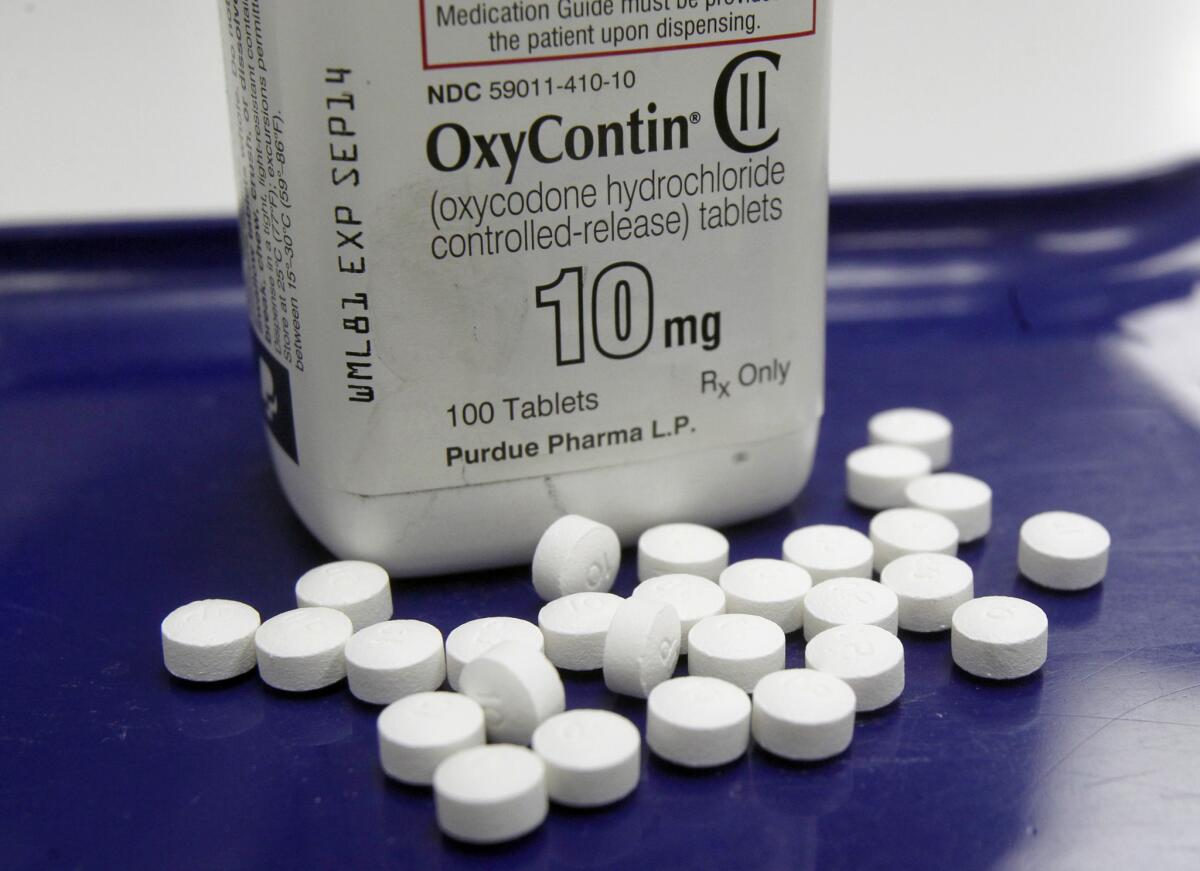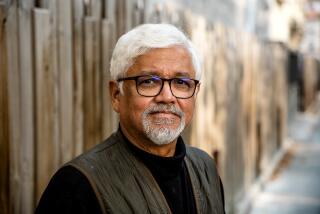Editorial: Doctors are on the front lines of opioid addiction. They aren’t doing enough to prevent it

OxyContin pills arranged for a photo at a pharmacy in Montpelier, Vt. in 2013.
- Share via
There’s never been a secret about the addictive properties of opioid painkillers. But a new investigation by The Times revealed something that wasn’t so widely known: The maker of one of the most popular opioid painkillers pushed doctors to adhere to a regimen that, as it turned out, made it more likely for patients to become addicts. And by the way, it was the regimen approved by federal regulators — one with unanticipated consequences that regulators and doctors have been too slow to address.
The drug in question is OxyContin, a version of the generic opioid painkiller oxycodone that Purdue Pharma introduced 20 years ago as a 12-hour alternative to cheaper, shorter-lived oxycodone products.
The federal Food and Drug Administration approved OxyContin based on evidence that the two-pills-per-day regimen worked for half or more of the patients in a test group. But sealed court records and internal company documents reviewed by The Times showed that the company knew that the relief wore off for many patients well before 12 hours.
Such results shouldn’t come as a surprise. After all, the FDA doesn’t require drugs to work as promised for all patients. What was eye-popping about The Times’ findings was how Purdue responded when doctors told them their patients weren’t getting the full 12 hours of relief promised. Instead of recommending that such patients take OxyContin more than twice per day — which might make it less appealing than cheaper generic opioids with short durations — Purdue’s representatives told doctors to stick to the 12-hour regimen and prescribe higher-strength pills.
As several medical experts explained to The Times, the change accentuated the most addictive properties of oxycodone. When the effects of OxyContin wear off well before 12 hours, a patient’s pain returns along with symptoms of opioid withdrawal, increasing the craving for another pill. Switching to stronger doses offers more profound pain relief, but won’t necessarily solve the problem of needing another pill in less than 12 hours. According to experts quoted in The Times, such repeated episodes of craving increase the likelihood of addiction.
Purdue insists that research supports the FDA’s approval of the 12-hour regimen, and that it is dedicated to fighting the opioid epidemic. Yet like every other drug manufacturer, its profits depend on maximizing sales. Company documents show that the sale of higher-dose pills resulted in bigger profits for Purdue and higher paydays for its sales representatives.
Given those incentives, it’s essential that the healthcare industry respond quickly when doctors and patients find that prescription drugs aren’t working as expected. The opioid epidemic resulted in part because regulators and prescribers didn’t realize just how powerfully addictive those substances were. And part of the solution may be prodding the FDA to monitor dangerous prescription drugs more closely and update their usage limits and warning labels more rapidly once problems become clear.
The more immediate step is for doctors to prescribe opioids less frequently. To that end, the Centers for Disease Control and Prevention issued new guidelines last month for the treatment of chronic pain, emphasizing safer approaches than the use of powerful opioids. This week an FDA advisory panel endorsed mandatory training for doctors who prescribe opioids as part of the agency’s rules for mitigating risk. And in California, a bill pending in the Legislature would require doctors and pharmacies to check a state database of existing prescriptions before prescribing potentially addictive drugs to new patients — a sensible step that will make it harder for patients to go doctor-shopping to feed their opioid habits.
To their credit, doctors have already reduced the number of opioids they prescribe. Yet physicians’ groups have pushed back against all three of these proposals, citing potential technical problems or the risk that patients who really do need the drugs won’t be able to obtain them. It’s certainly true that opioids have an important role to play in pain relief, and that chronic pain is a problem that defies easy solution. But given the steady rise in overdoses and addictions from coast to coast, it’s inarguable that the use of these drugs has gotten wildly out of hand. Just as regulators and drugmakers have to step up their efforts, so too do those who prescribe opioids. Just as they are on the front line of the battle against chronic pain, so too are they the first line of defense against addiction to prescription drugs.
Follow the Opinion section on Twitter @latimesopinion and Facebook
More to Read
A cure for the common opinion
Get thought-provoking perspectives with our weekly newsletter.
You may occasionally receive promotional content from the Los Angeles Times.










